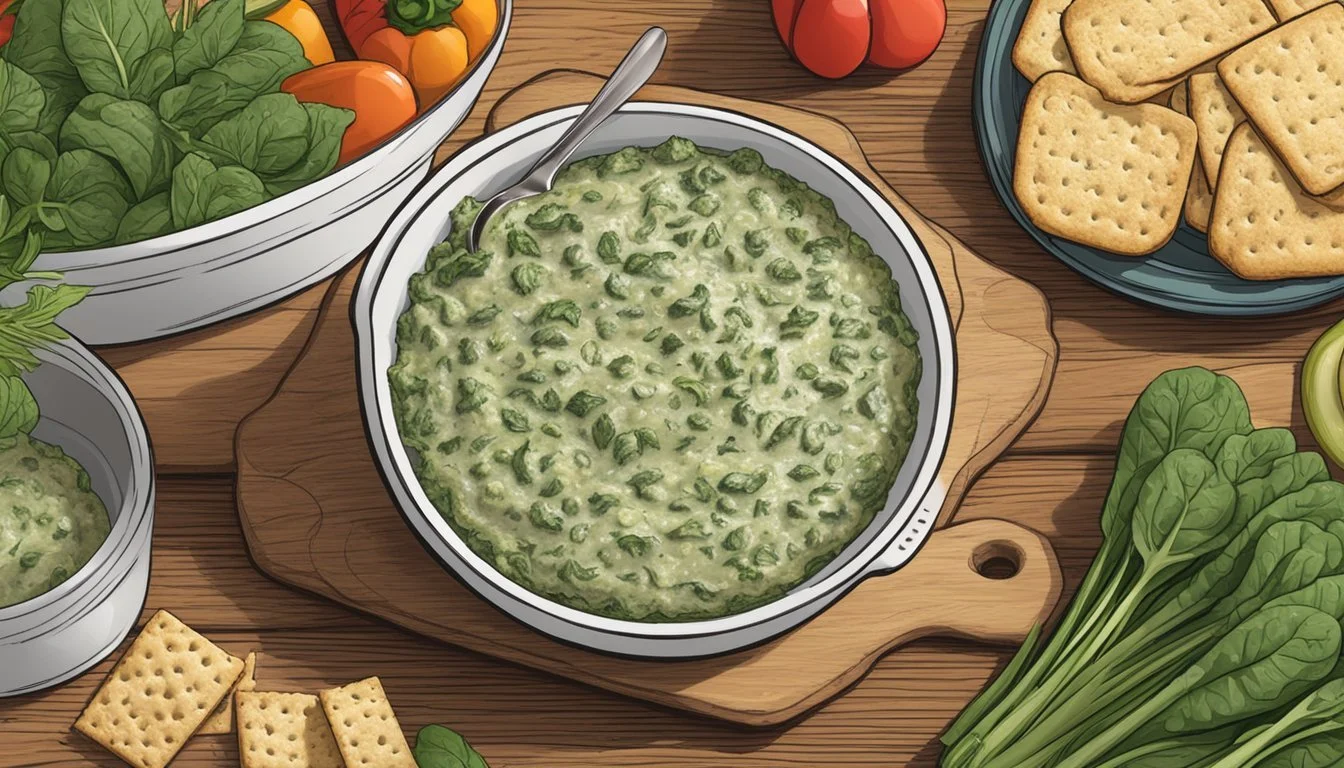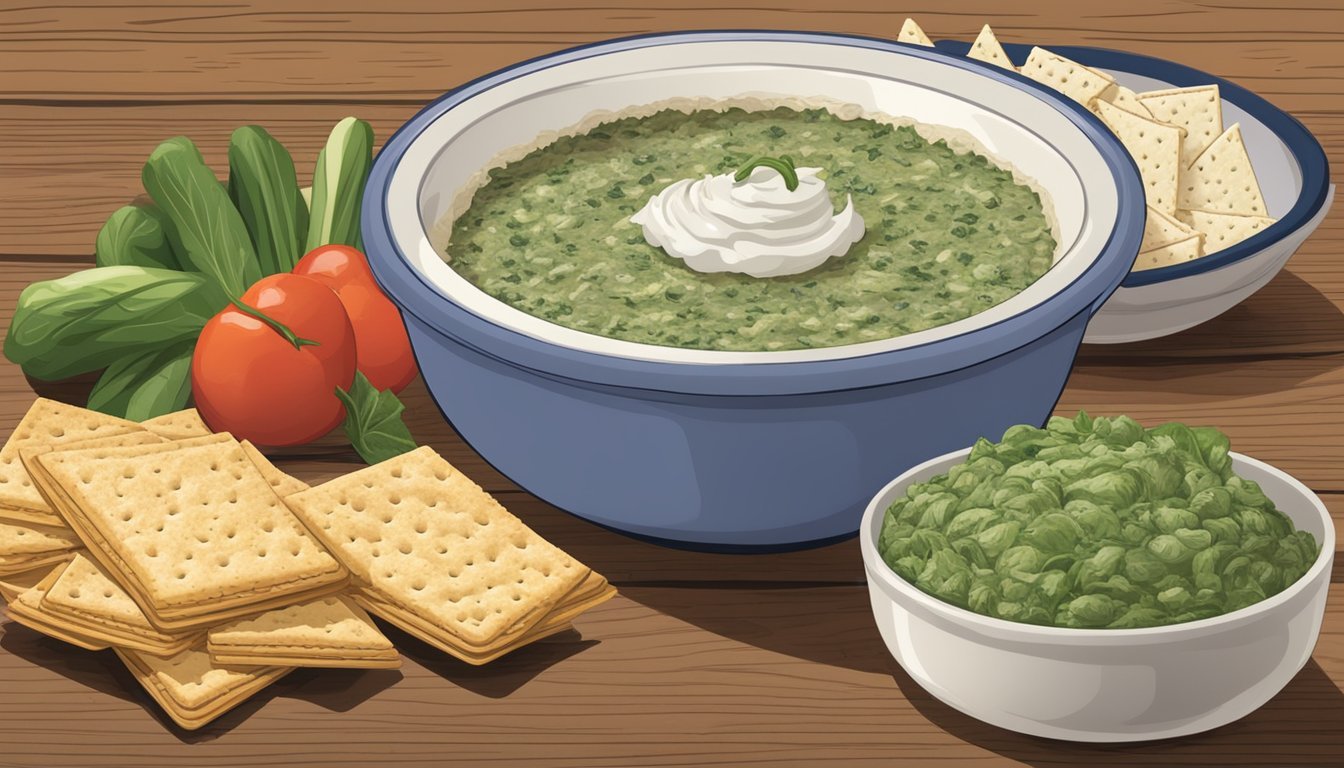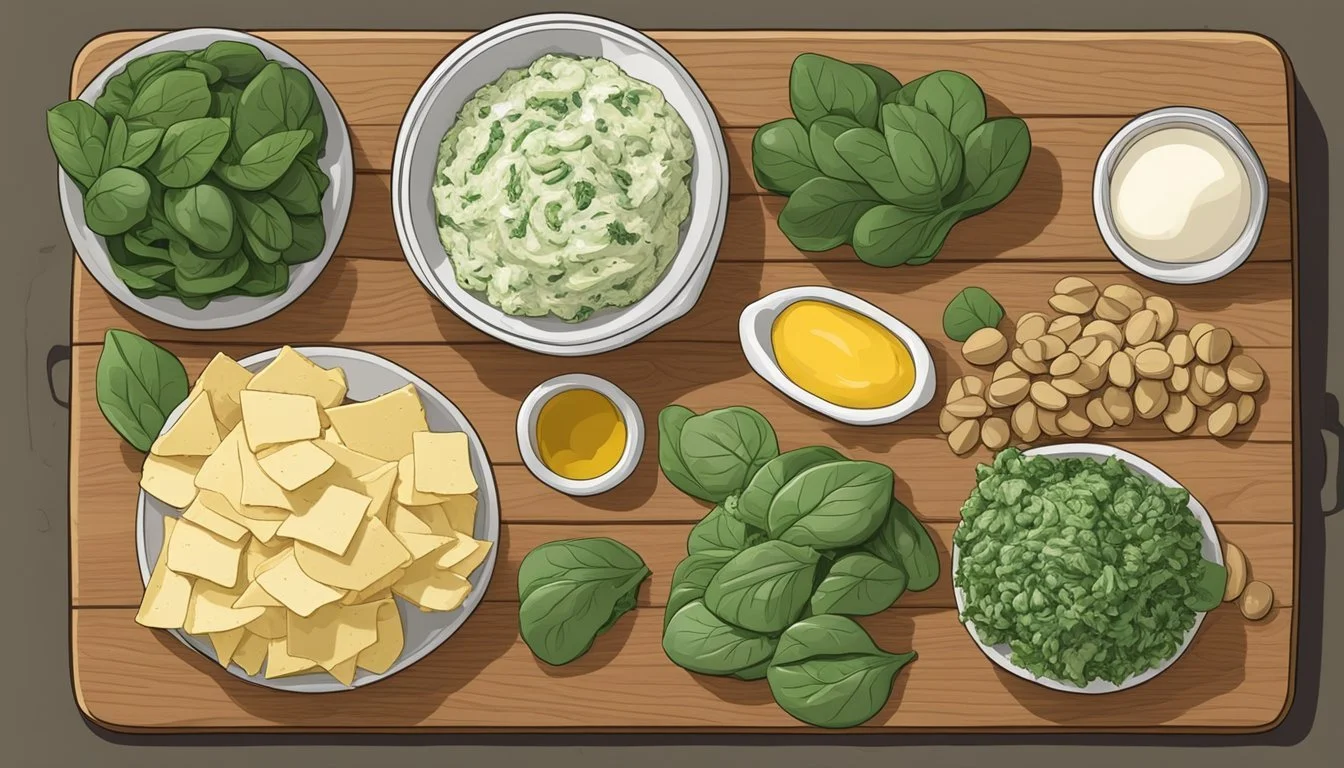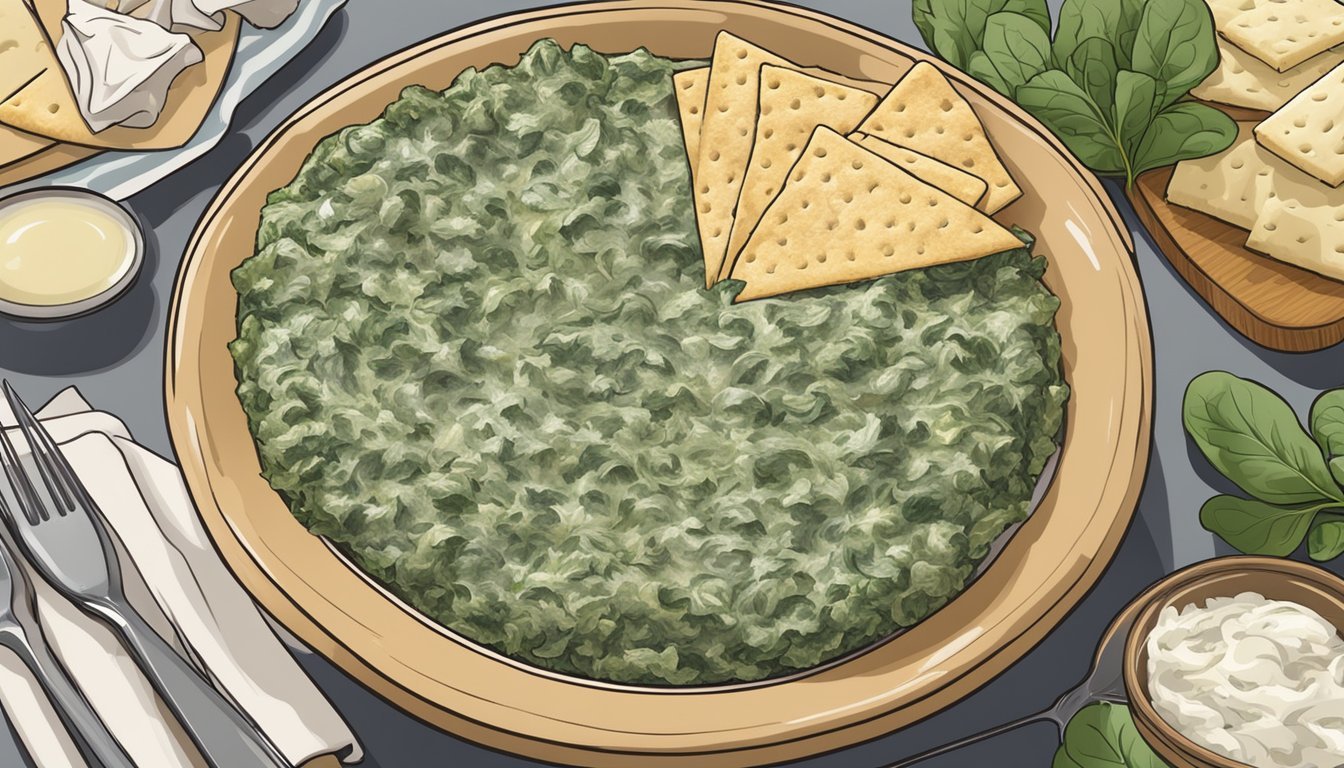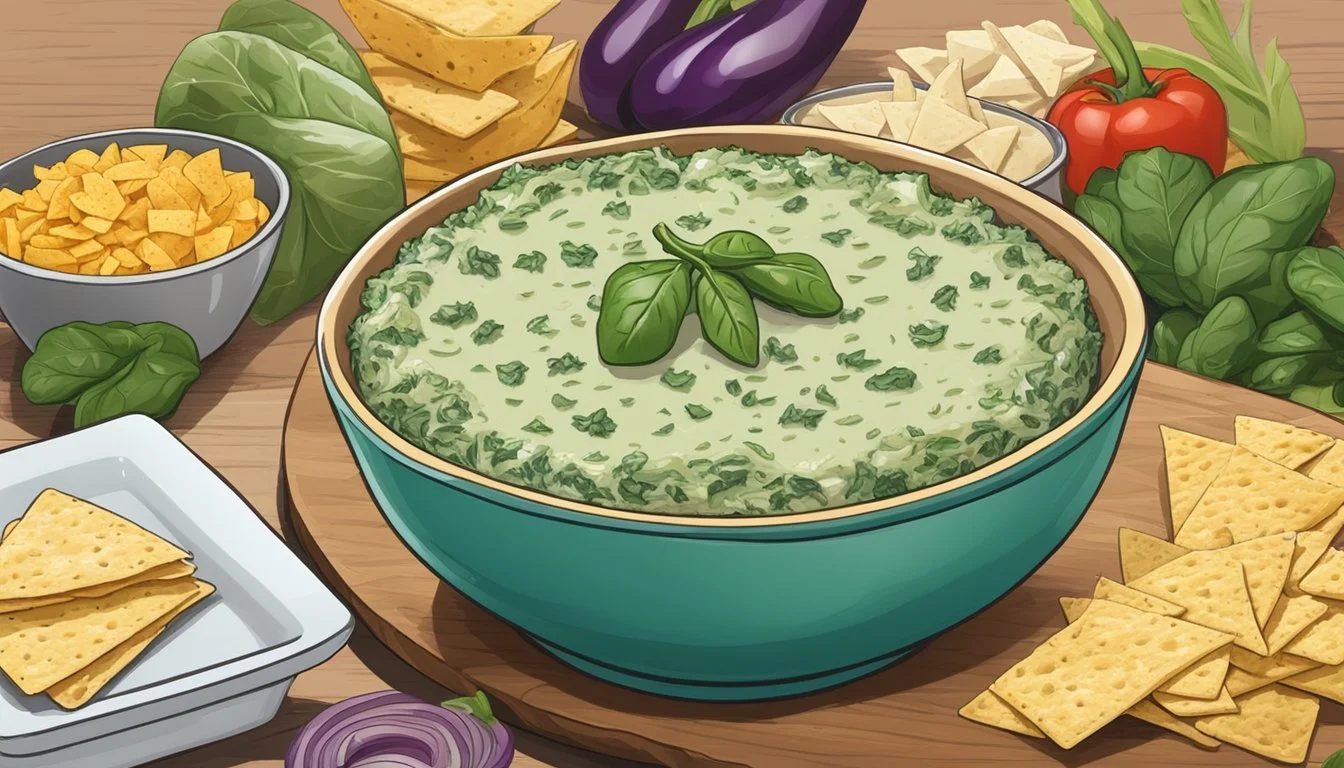Are Spinach and Artichoke Dip Gluten-Free?
Unveiling the Truth about this Popular Appetizer
Spinach (What wine goes well with spinach?) and artichoke dip (What wine goes well with spinach and artichoke dip?) is a popular appetizer known for its creamy texture and rich flavor. For individuals who follow a gluten-free diet due to celiac disease, gluten intolerance, or other health reasons, the question of whether this dip is safe to consume is of considerable importance. The fundamental composition of spinach and artichoke dip typically includes leafy spinach, tender artichoke hearts, a blend of cheeses, and often a creamy base made from mayonnaise, sour cream, or cream cheese. These ingredients are naturally gluten-free, suggesting that the dip can indeed meet dietary restrictions related to gluten.
However, gluten-free status is not guaranteed for all spinach and artichoke dips due to variations in recipes and preparation methods. Some recipes may contain ingredients like flour or breadcrumbs as thickeners or fillers, which introduce gluten into the dish. Additionally, cross-contamination can pose a risk when the dip is prepared in kitchens where gluten-containing ingredients are handled.
Consumers must be vigilant by scrutinizing ingredient labels when purchasing store-bought dips and by inquiring about preparation methods when dining out. Fortunately, awareness of gluten-related health issues has increased, leading to wider availability of gluten-free options and more careful labeling practices. Those looking to enjoy spinach and artichoke dip without gluten can often find safe recipes or commercial products that cater to their dietary needs.
Understanding Gluten-Free Diets
A gluten-free diet excludes all forms of gluten, a protein found in wheat, barley, rye, and triticale. This diet is essential for managing symptoms of celiac disease and other medical conditions associated with gluten intolerance. While gluten itself is a protein, eliminating it from one's diet does not necessarily mean a lack of protein in the nutritional intake. There are plenty of gluten-free protein sources available, such as meat, fish, eggs, legumes, and dairy products.
Choosing a gluten-free lifestyle involves paying careful attention to both the ingredients and the preparation of foods. Cross-contamination can occur if foods are prepared using the same utensils or surfaces that have come into contact with gluten. Individuals should always check labels or inquire about food preparation methods to ensure safety.
Nutritional Considerations: A common misconception is that gluten-free products are inherently healthier. However, they can lack essential nutrients if one is not mindful of balanced eating. Here's how individuals can maintain nutrition on a gluten-free diet:
Fiber: Gluten-free grains such as brown rice, quinoa, buckwheat, and millet are high in fiber. Fruits, vegetables, and nuts are also excellent sources of fiber.
Protein: Aside from animal-based sources, beans, lentils, nuts, and soy products like tofu are rich in protein and suitable for a gluten-free diet.
Fortified Foods: Some gluten-free bread and cereals are fortified with vitamins and minerals to enhance their nutritional profile.
People following a gluten-free diet should consult with a nutritionist to design a well-balanced diet plan that ensures they receive all necessary nutrients while avoiding gluten.
The Basics of Spinach and Artichoke Dip
Spinach and artichoke dip is a creamy, cheesy appetizer enjoyed at parties and gatherings. It's known for its rich flavor and versatile ingredient combinations that can cater to various dietary preferences.
Core Ingredients
The classic spinach artichoke dip typically includes:
Spinach: Either fresh or frozen, serving as the foundational green.
Artichoke Hearts: Canned or jarred and chopped.
Cheese: A blend involving cream cheese, Parmesan cheese, and mozzarella cheese.
Dairy Components: Such as mayonnaise and sour cream for creaminess.
Aromatics: Garlic is used for extra zing in flavor.
Certain recipes may substitute mayonnaise with Greek yogurt for a lighter version.
Variations and Versions
Dip variations may include:
Dairy-Free: Using vegan cheese and dairy substitutes.
Reduced Fat: Swapping in low-fat cheeses and Greek yogurt.
Additions: Incorporation of various herbs, spices, or additional cheeses for depth of flavor.
Moreover, variations often align with dietary restrictions, turning the traditional recipe into gluten-free, vegan, or low-fat versions.
Dip Texture and Flavor Profiles
The texture of the dip should be:
Creamy: Achieved through the combination of cheese and creamy ingredients.
Dippable: Consistency that holds on to chips or veggies.
The flavor profile of spinach artichoke dip is:
Cheesy: Thanks to a mixture of Parmesan and mozzarella (and sometimes more).
Garlicky: With a standout presence of garlic.
Savory: Notes of the artichokes (What wine goes well with artichokes?) and spinach complement the dairy base.
Preparing Spinach and Artichoke Dip
Spinach and artichoke dip is a crowd-pleasing appetizer that can be prepared using various techniques to achieve a hot, creamy, and satisfying dish. Whether it's baked to a golden brown or served warm, this classic dip is a staple at gatherings.
Cooking Techniques
The foundational steps in preparing a homemade spinach and artichoke dip often involve combining creamy ingredients such as cream cheese, sour cream, and mayonnaise with spinach, artichoke hearts, and a blend of cheeses. For a baked version:
Preheat the oven to a temperature typically between 350°F to 375°F.
Mix the primary ingredients in a large bowl until they are well combined.
Transfer the mixture into a baking dish and bake until the dip is bubbling and achieves a golden brown surface.
Alternatively, one may use a microwave or slow cooker for convenience.
Microwave: Combine ingredients in a microwave-safe bowl and heat until the cheeses are melted, stirring occasionally.
Slow Cooker: Place all ingredients into the crock and cook on low for 2-3 hours, or until hot and flavors have melded together.
Serving Suggestions
Upon cooking, the dip should be served warm to maximize flavor and texture.
For a classical touch, garnish with shredded cheese and a dash of paprika before serving.
Keep the dip hot and inviting by serving it in a heated dish or maintaining it in a slow cooker on the warm setting.
Dipper Pairings
To accommodate those with dietary restrictions, particularly gluten intolerance, provide a variety of gluten-free dippers. Here are some pairing options:
Gluten-Free Crackers: These provide a satisfying crunch without the gluten.
Raw Veggies: Options like celery sticks and carrot sticks are not only gluten-free but also add a refreshing contrast.
Gluten-Free Tortilla Chips: A staple for dips and safe for gluten-sensitive guests.
Bread Alternatives: Gluten-free baguettes or pita bread can offer the bread experience to those avoiding gluten.
Ensuring a Gluten-Free Dip
When preparing spinach and artichoke dip at home, it is essential to select gluten-free ingredients, understand cross-contamination risks, and adapt recipes to ensure the dip is gluten-free.
Safe Ingredients Selection
Ingredients are the foundation of a gluten-free spinach and artichoke dip. One must carefully inspect labels to confirm that each component is gluten-free. Key ingredients such as cream cheese, sour cream, and cheeses like mozzarella and parmesan typically do not contain gluten. However, one should look for a "gluten-free" label to be certain. When it comes to acquiring artichokes and spinach, it is safe to use fresh or frozen varieties, as they are naturally gluten-free. However, if one opts for canned or pre-packaged products, it is critical to check for additives that may contain gluten.
Table 1: Gluten-Free Ingredients Checklist
Ingredient Gluten-Free Confirmation Cream Cheese Check label for gluten-free claim Sour Cream Check label for gluten-free claim Cheeses (Mozzarella, Parmesan) Check label for gluten-free claim Artichokes (canned or pre-packaged) Check label for additives Spinach (canned or pre-packaged) Check label for additives Mayonnaise (if used) Check label for gluten-free claim Cream (if used) Check label for gluten-free claim
Cross-Contamination Considerations
Cross-contamination in the kitchen can turn a gluten-free dip into one that is unsafe for individuals with gluten sensitivities or celiac disease. To prevent this, it is crucial to use clean kitchen tools and surfaces that have not come in contact with gluten-containing foods. It is equally important to use separate utensils when serving the dip to keep it gluten-free. If store-bought gluten-free dippers or gluten-free crackers are being served, one should ensure they are handled with clean utensils to prevent contamination from gluten-containing counterparts.
Gluten-Free Recipe Adaptations
Adapting a spinach and artichoke dip recipe to be gluten-free generally involves few modifications since the main components are naturally gluten-free. However, some recipes may call for flour as a thickener or include a topping like breadcrumbs. In such cases, one can substitute flour with a gluten-free thickener like cornstarch or almond flour and replace breadcrumbs with gluten-free options like crushed gluten-free crackers or oats.
It should be noted that ready-made spinach and artichoke dip varieties in stores may not be gluten-free due to added ingredients or processing practices. Therefore, reading the product label is essential when selecting store-bought options. Homemade dip recipes provide better control over ingredients and help ensure a gluten-free end product. Plus, homemade dips can be tailored to personal preference and dietary needs.
For complete peace of mind, it is always advised to prepare the dip oneself using trusted, verified gluten-free products and strict kitchen protocols to avoid any gluten exposure.
Nutritional Information
When examining the nutritional profile of spinach artichoke dip, one finds that it often contains a mix of nutritious vegetables and high-calorie dairy products. Spinach provides an excellent source of vitamins such as vitamin K, A, C, and folate, as well as minerals like iron and manganese. Artichokes add to the fiber content and are also rich in vitamin C, folate, and antioxidants.
Here is a typical breakdown of the macronutrients in a serving of spinach artichoke dip:
Calories: Varies, typically 200-300 calories per 1/4 cup serving
Fat: Can be high due to cheese and mayonnaise; approximately 15-25g
Carbohydrates: Mostly from vegetables; around 5-10g
Fiber: Artichokes are a good source; about 2-4g
Protein: Moderate, from cheese; roughly 5-10g
Keep in mind that these values can fluctuate based on the specific recipe and portion size. If made with full-fat cheese and mayonnaise, the dip can be rich in saturated fat. For a lower-calorie version, one can use reduced-fat cheese and a lighter alternative to mayonnaise, like Greek yogurt.
However, the presence of gluten is primarily tied to the choice of dipping accompaniments such as bread or crackers. The dip itself, when prepared with naturally gluten-free ingredients like fresh spinach, canned artichokes, cheese, and cream, can be gluten-free. It's important to read labels carefully to ensure that all ingredients meet gluten-free standards, especially processed items that can contain hidden gluten.
Storage and Leftover Management
Proper storage techniques can greatly extend the enjoyment and safety of consuming leftover spinach and artichoke dip. Ensuring leftovers are promptly and correctly stored will maintain their quality and prevent food spoilage.
Refrigeration Practices
Leftover spinach and artichoke dip should be placed in the fridge within two hours of serving to prevent bacterial growth. It is recommended to store the dip in an airtight container to retain freshness and prevent it from absorbing any odors from the fridge. Refrigeration can typically keep the dip fresh for up to three days. The individual should always check the dip visually and for any off smells before consuming the leftovers as these are clear indicators of spoilage.
Here are some tips for refrigeration:
Use shallow containers to help the dip cool quickly and evenly.
Label the container with the date to keep track of how long the dip has been stored.
Freezing and Reheating
Although not all dips freeze well due to the mayonnaise or sour cream content potentially separating, a person can freeze leftover spinach and artichoke dip if desired. To freeze, portion the dip into servings, place in an airtight container or heavy-duty freezer bags, and store in the freezer. The quality is best when used within one to two months.
For reheating, one can thaw the dip in the fridge overnight before warming. They can use a microwave or an oven for reheating the dip.
Microwave: Heat in increments of 30 seconds, stirring in between to ensure even warming.
Oven: Preheat to 350°F and warm the dip in a baking dish until heated through, usually about 10-15 minutes.
Remember, if the texture of the dip has significantly changed after freezing and thawing, it is best to use the reheated dip as a creamy addition to other dishes rather than as a standalone dip.
Additional Serving and Garnishing Tips
For a delightful presentation and added flavor, a variety of cheeses and garnishes can elevate a gluten-free spinach and artichoke dip to new culinary heights. The use of shredded mozzarella ensures a beautifully golden and bubbly top layer when baked, while adding grated parmesan cheese or shredded parmesan introduces a savory, nutty taste.
Here are some tips for serving and garnishing:
To enhance the appearance and taste, sprinkle extra shredded mozzarella on the dip before placing it in the oven. The cheese will melt to create a visually appealing, golden top layer.
A final garnish of shredded parmesan cheese adds a rich, sharp flavor and a touch of elegance. For best results, use freshly grated parmesan right before serving.
Pair the dip with an array of gluten-free options such as toasted gluten-free baguettes, rice crackers, or vegetable sticks. These accompaniments should be chosen not just for their gluten-free properties but also for their ability to complement the dip's creamy texture.
For a hint of freshness, consider garnishing with finely chopped herbs like basil or parsley. This not only brings color to the dish but also a burst of flavor.
Remember to stay mindful of all ingredients to maintain the gluten-free integrity of the dish, especially when selecting accompanying breads or crackers. Always opt for fresh, high-quality cheese for the best flavor and melt.
Troubleshooting Common Issues
When making spinach and artichoke dip to ensure it is gluten-free, one may encounter a few issues related to texture, flavor, and creaminess. Below are strategies to address these common problems.
Texture and Creaminess:
If the dip is too runny, one could have added too much sour cream or the spinach may not have been well-drained. To remedy this, one can:
Add more cheese, which acts as a thickener.
Allow the dip to bake slightly longer than recommended, until it reaches the desired consistency.
To amplify creaminess, if the dip feels too thick or stiff, consider:
Incorporating more sour cream or a dollop of cream cheese.
Flavor Adjustments:
Salt and pepper are critical in achieving the right balance. If the dip tastes bland:
Incrementally increase the amount of salt and pepper until the flavor pops.
Garlic powder can be a powerful addition to enhance flavor. If the garlic presence is weak:
Gradually add more garlic powder, tasting as one goes, to avoid overpowering the dip.
Remember, each ingredient impacts the dip, so adjustments should be made carefully and incrementally. It's important to taste as you adjust to avoid over-seasoning. Moreover, being confident and knowledgeable about the function of each component helps in achieving a neutral, clear result that's true to the traditional, gluten-free spinach and artichoke dip one strives for.
Making Spinach and Artichoke Dip for Events
When preparing Spinach and Artichoke Dip as an appetizer for events, chefs should prioritize ingredients that are gluten-free to accommodate guests with dietary restrictions. For a crowd-pleasing experience, it's essential to start with the freshest ingredients. They should opt for fresh spinach leaves and high-quality artichoke hearts, ensuring both are thoroughly washed and chopped.
Ingredients:
Fresh spinach
Canned or frozen artichoke hearts
Gluten-free cream cheese
Gluten-free sour cream or a gluten-free mayonnaise
Grated gluten-free Parmesan cheese
Shredded gluten-free mozzarella cheese
Minced garlic
Salt and pepper to taste
Instructions:
Preheat the event venue's oven to a temperature between 350-375 degrees Fahrenheit.
Chefs need to combine their chopped spinach and artichoke hearts with gluten-free dairy products, such as cream cheese, sour cream or mayonnaise, and their choice of cheeses in a large bowl.
Season the mixture with minced garlic, salt, and pepper.
They should spread the mixture into a baking dish that has been lightly greased with a gluten-free cooking spray.
The dip should bake until it is bubbly and golden brown, which typically takes around 20-30 minutes.
Serving:
For Serving: Present the dip in a chafing dish to keep it warm.
Dippers: Offer an array of gluten-free dippers like tortilla chips, cut-up vegetables, or gluten-free bread.
By following these guidelines, chefs can create a delectable and safe Spinach and Artichoke Dip that all guests can enjoy, making the event memorable.
Buying Guide for Ingredients
When crafting a gluten-free spinach and artichoke dip, selecting quality ingredients is paramount to achieve the perfect flavor and texture. Each component plays a critical role, from the richness of the cheeses to the fresh taste of the veggies.
Selecting Quality Cheeses
For a luscious and creamy dip, one must focus on choosing high-quality cream cheese, Parmesan cheese, and mozzarella cheese. Cream cheese should be full-fat for optimal creaminess. Parmesan cheese is vital for its sharp flavor; always opt for freshly grated over pre-shredded to avoid potential gluten-containing additives. Mozzarella cheese should be chosen for its melting properties; a fresh block that you shred yourself will make a noticeable difference in texture.
Choosing Fresh vs Canned Artichokes
One can use either fresh or canned artichoke hearts, yet each choice yields different nuances in flavor and texture. Fresh artichokes offer a subtle taste but require more prep work. Conversely, canned artichoke hearts are convenient and provide a consistent, tender bite. Ensure that canned varieties are packed in water or olive oil and are free from gluten-containing seasonings or additives.
Finding the Best Spinach
Vibrant green spinach is a staple ingredient, and one but decide between fresh or frozen. Fresh spinach boasts a delicate flavor and requires a quick sauté in olive oil until wilted. Alternatively, frozen spinach is a convenient and cost-effective option; however, it must be thoroughly thawed and squeezed of excess moisture to avoid a watery dip. Regardless of the type, ensure the spinach is bright and free from wilting or bruising.
Frequently Asked Questions
Is spinach and artichoke dip gluten-free?
Spinach and artichoke dips can be gluten-free if made with gluten-free ingredients. One should avoid using ingredients that contain gluten, such as flour or breadcrumbs, which are sometimes added for texture or thickness.
What should individuals look for in a gluten-free recipe?
When following a recipe, individuals should ensure that all processed ingredients, including mayonnaise and seasonings, are labeled gluten-free. Cross-contamination is also a concern, so one must use clean utensils and avoid contact with gluten-containing foods.
Are there any specific tips for making gluten-free spinach and artichoke dip?
Here are a few tips for ensuring your dip remains gluten-free:
Use fresh ingredients where possible, as they are less likely to contain hidden gluten.
Read labels carefully on canned or processed products, such as artichoke hearts or cream cheese.
When eating out, always ask the server about the dip's ingredients and preparation to avoid gluten exposure.
Can all artichoke and spinach dip ingredients be easily sourced as gluten-free?
Most of the primary ingredients in spinach and artichoke dip, such as spinach, artichokes, and dairy products, are naturally gluten-free. However, individuals should be vigilant about secondary ingredients and potential cross-contamination.
Remember to always double-check ingredients, especially when preparing or purchasing dips, to ensure they comply with a gluten-free diet.

